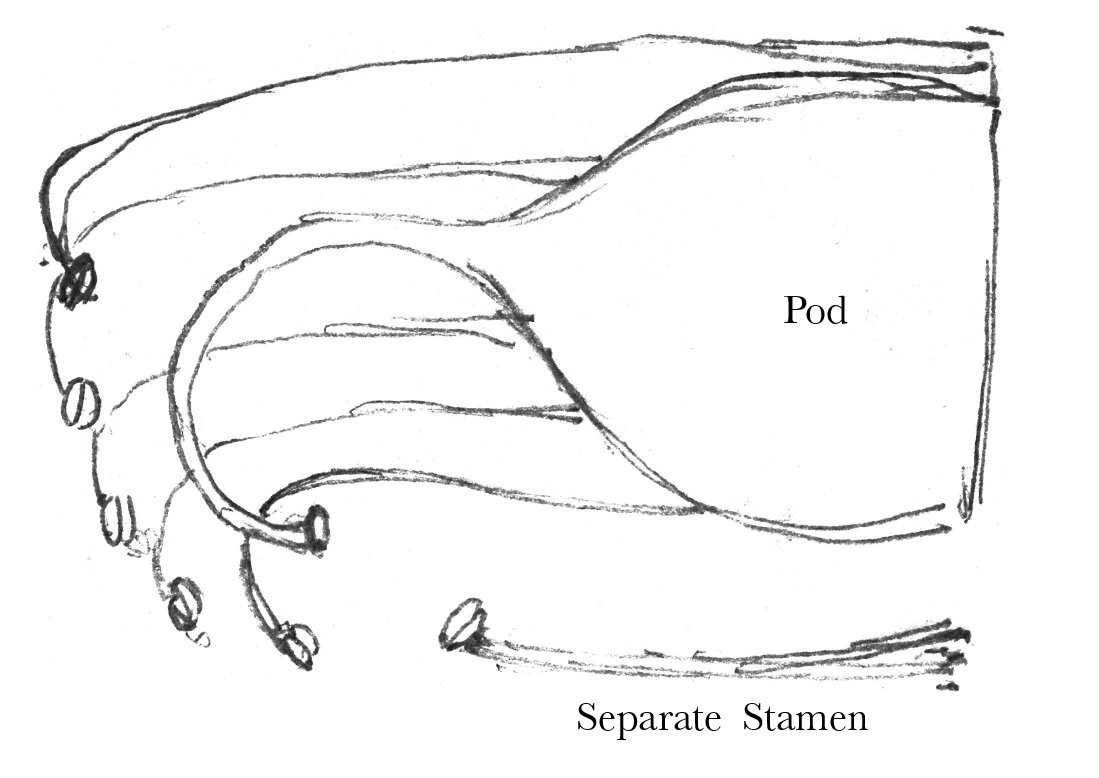From T. H. Farrer 21 November 1868
3 Gloucester Terrace | Regents Park
21 Nov/68
My dear Mr Darwin.
Since I saw you I have been looking over some notes—made in September.1 And I think something might be made out of an attempt to explain many parts at any rate of the structure & variations of Papilionaceous flowers by your views concg insect agency & crossing. For instance I believe the following features may be traced to this cause.
1. The varied bendings of the peduncle before & in flowering so as to make wings & keel a lighting place.
2 The attachment of the wings to the keel; and of the sides of the keel to each other; in other words the more or less development of gamopetalism.2
3 The stiffness or otherwise of the filaments—correlated to the character, moist or dusty, of the pollen—and absence or presence of a brush on the style.
4. The character of the pollen
5. The Shape & position of style & stigma; and the presence or absence & position of hairs upon it.
Other points—such as shape & colour of vexillum:3 solitary carpel: & staminal coherences suggest themselves to the imagination— As regards this latter point & the free stamen—which you suggested there is one case of totally separate stamens (Chorozēma) which struck me as very curious & which may possibly give some hints. Of this I venture to send you a note.4
Now might I ask you quite at your leisure to tell me whether you think this subject at all worth following up. It is simply an amusement and relaxation to me— But one would rather spend leisure hours in a right than in a wrong direction.
I think the “hairs” also would be extremely interesting.
Believe me | Sincerely yours | T H Farrer
[Enclosure]
Eashing
Sep 27.
Chorozema
Upper part of Vexillum much bent back, lower part very stiff. Very short blunt keel: but wings long spreading and bright colored. An insect lighting on the keel if it could, would not open it: but in lighting on and pressing down the wings, the lower part of the wings presses on the keel, and thus as by a lever presses down and opens the keel, and leaves Stamens and Pistol exposed. The filamentsof stamens do not cohere.— but the separate Stamen stands apart from the rest in front. All with the exception of this stamen are bent over—and the pistol is bent over also. The anthers open inwards towards one another, and towards the Stigma. The opened cells of the separate stamen are below the stigma—those of the 9 others above it—all towards it. If any object is thrust down between the 9 Upper Stamens and pistal it brushes in going down on one side the back of some of the 9 upper anthers, and on the other side the Stigma, and in coming up it brushes the open side of the same anther cells, but not until it has passed the Stigma. If it passes between the Stigma and the separate Stamen it brushes the open anther cell in going down; but not until after it has passed the Stigma. And in going up it is the other side which will touch the Stigma from that which has touched the open anther cell. It will therefore carry away pollen from all the anther cells— but deposit none upon the stigma. The curious form of the Stamens as well as the action of the Wings on the keel are remarkable.
Below is very rough diagram of the position of the stamens and pistil with the 4 stamens on the nearer side removed.

Footnotes
Bibliography
Correspondence: The correspondence of Charles Darwin. Edited by Frederick Burkhardt et al. 29 vols to date. Cambridge: Cambridge University Press. 1985–.
Summary
Thinks CD’s views of insect agency and crossing might explain structure and variations of papilionaceous flowers. Lists five points. Asks CD’s opinion.
Letter details
- Letter no.
- DCP-LETT-6470
- From
- Thomas Henry Farrer, 1st baronet and 1st Baron Farrer
- To
- Charles Robert Darwin
- Sent from
- London, Gloucester Terrace, 3
- Source of text
- DAR 164: 49; Linnean Society of London, MS Case 6B, No. 299
- Physical description
- ALS 4pp
Please cite as
Darwin Correspondence Project, “Letter no. 6470,” accessed on 16 April 2024, https://www.darwinproject.ac.uk/letter/?docId=letters/DCP-LETT-6470.xml
Also published in The Correspondence of Charles Darwin, vol. 16


